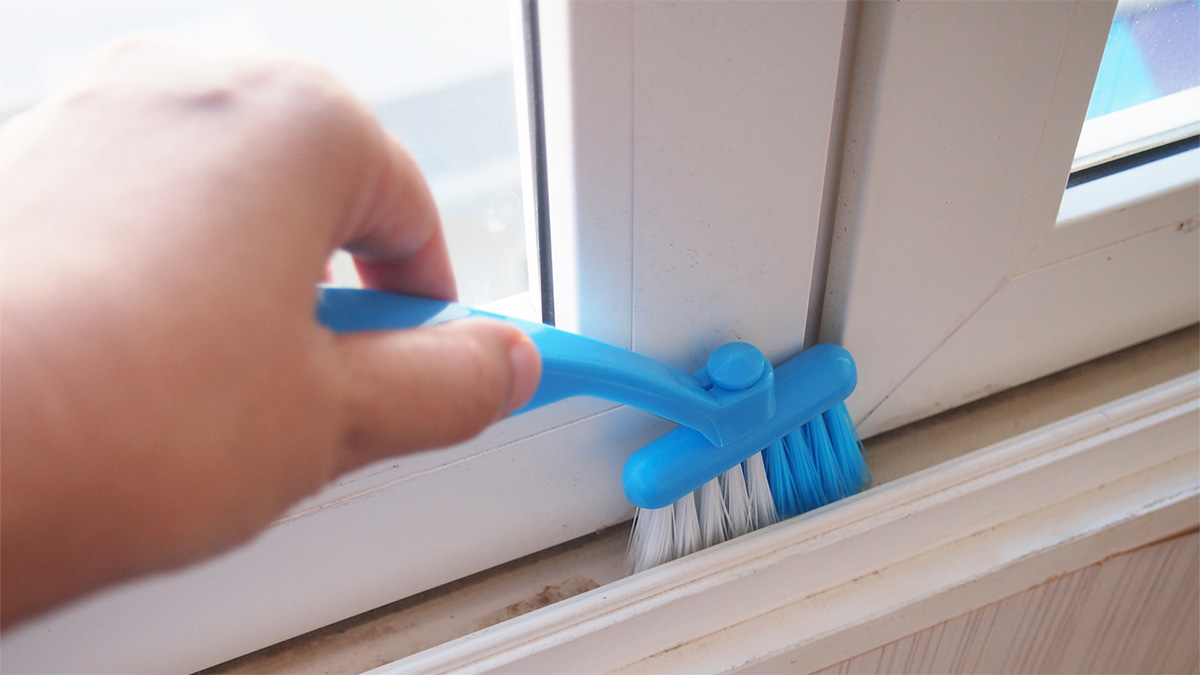Originally published: January 3, 2023
One of the issues that cause sliding doors to become immobile is the build-up of dust, grime, and other material along the door’s tracks. A dirty track can lead to those bits and particles getting stuck in your door’s wheel or rollers, which will at best limit its mobility and at worst halt it altogether (read: why you should leave sliding door track repairs to the professionals). Maintaining a clean track for your sliding door is important not only for the door’s usability but also for your safety when using it. Here is what to know to keep your sliding door tracks clean and usable.
Vacuum It Up:
With a standing vacuum that has a nozzle and hose, or a small handheld vacuum that you can navigate over the tracks, you should be able to remove a large percentage of the debris from the tracks. This is by far the easiest and most efficient way to remove loose visible debris. Go back and forth over the tracks a few times on a weekly basis.
Wipe It Down:
There are a couple of ways to go about wiping down your tracks, all depending on just how detailed you want to be. If you want to do the cleaning completely yourself, take a sponge damp with water and dish soap and wipe both the inside and outside of your tracks. Alternatively, you could use vinegar in a spray bottle and a towel to wipe down your sliding door tracks. Use a dry towel to wipe off any remaining oil or debris. Alternatively, if you want to let a cleaning solution do the majority of the work in cleaning your tracks, then sprinkle baking soda on the track and apply hydrogen peroxide on top of the baking soda. You can leave it there to set for 5-10 minutes. Your role then is to simply wipe off the grime that’s been loosened. Easy peasy!
Dislodging Grime:
Sometimes towels and sponges aren’t enough to get all the gunk out of track, especially if it’s lodged in a hard-to-reach spot. For grime lodged in the track, take a Q-tip or old toothbrush and brush the nooks and crannies.
Use the Right Type of Lubricant:
If your sliding door is still hard to slide across the tracks after you’ve tried cleaning out the dirt and grime, you can try using a lubricant to make using your sliding door easier. But don’t use WD-40 on a sliding glass door! The ‘WD’ in WD-40 stands for water displacement, and while the product is pitched as a solution for anything that is stuck and needs some lubrication, it’s designed to displace water, not dirt, and the effectiveness will wear off quickly as it evaporates. When you want to use a spray that will improve the slide of your doors, look for a silicone lubricant (the WD-40 brand has a silicone version, but you have to look for the label that says silicone). A silicone lubricant will help grease up your sliding door tracks and keep them sliding easily for much longer.
Not sure why your sliding glass door isn’t sliding smoothly? Reach out to our experts who can help you analyze and repair any issues with your sliding doors.
If you’re following our tips for regularly cleaning your sliding door tracks, your door should remain in top condition and efficiently glide across its tracks. However, if you do face problems with a stuck door, give our team at California Sliding Door a call for maintenance and repair services in the Los Angeles area!





